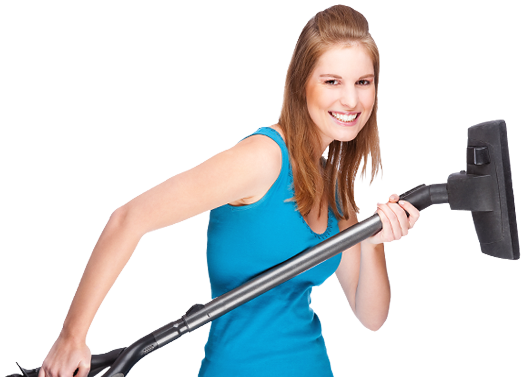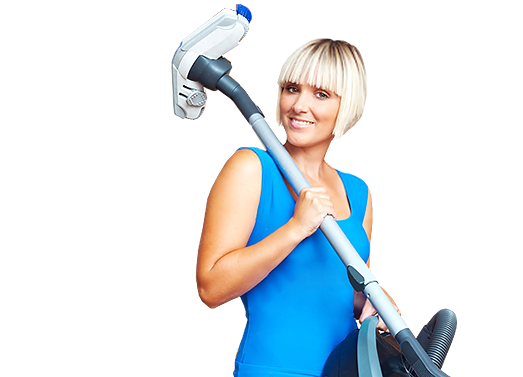Create a Home That's Safe from Dust and Allergens
Posted on 01/06/2025
Create a Safe Home: Ultimate Strategies to Prevent Dust and Allergens
Allergens and dust are unwelcome guests in any household. They don't just make your space unsightly; they can also trigger allergies, reduce air quality, and impact your wellbeing. If you're determined to create a home safe from dust and allergens, this in-depth guide will help you address the problem from every angle. Read on for the most effective tips and methods to keep your sanctuary spotless, comfortable, and safe for everyone.

Understanding the Sources: Where Do Dust and Allergens Originate?
Before adopting strategies to prevent dust and allergens, it's vital to understand their sources. Most household dust is a complex combination of various particles, including:
- Dander from humans and pets
- Textile and carpet fibers
- Pollen, mold spores, and plant material
- Outdoor airborne particles brought indoors
- Bacteria, dust mites, and their droppings
Allergens enter our homes through windows, doors, on clothing, or from pets. Some, like dust mites and mold spores, thrive indoors. Creating a home that's protected from dust and allergens requires a multipronged approach targeting these sources.
The Health Impact of Dust and Indoor Allergens
Ignoring household dust and allergens can cause a range of health issues, especially for those with asthma, allergies, or other respiratory problems. Common symptoms include:
- Runny nose, sneezing, and nasal congestion
- Watery or itchy eyes
- Frequent coughing or wheezing
- Headaches and fatigue
Prolonged exposure may exacerbate asthma or allergic reactions. That's why maintaining an allergen-free home is crucial for families and sensitive individuals.
Step-by-Step Guide: How to Create a Home Safe from Dust and Allergens
1. Develop a Consistent Cleaning Routine
The foundation of a dust-free and allergen-safe home is regular cleaning. Set up a schedule and assign tasks to household members for efficiency. Consider these essential actions:
- Dust with a damp cloth: Dry dusting spreads particles into the air. Use a damp microfiber cloth to effectively trap dust on surfaces.
- Vacuum frequently: Aim for at least two times a week. Use a vacuum cleaner with a HEPA filter to capture fine dust and allergens.
- Mop hard floors: Follow vacuuming with damp mopping to collect leftover debris.
Don't neglect hidden areas -- under furniture, behind appliances, and windowsills. Consistency is key in maintaining an allergen-reduced home.
2. Choose the Right Flooring and Furniture
Carpets and upholstered furniture are notorious dust and allergen traps. While not everyone can eliminate them, consider these changes:
- Opt for hard flooring: Hardwood, laminate, vinyl, and tile are far easier to clean than carpet.
- Use washable rugs: Pick area rugs that can be laundered regularly.
- Limit upholstered furniture: Select leather, wood, or metal which don't trap dust easily.
If you keep carpets or soft furnishings, vacuum and steam-clean them routinely.
3. Control Humidity to Inhibit Allergen Growth
Dust mites and mold thrive in humidity above 50%. High moisture also makes it easier for allergens to circulate. Tackle humidity with these strategies:
- Use dehumidifiers in damp rooms, basements, or bathrooms.
- Ventilate with exhaust fans in kitchens and bathrooms.
- Repair leaks and improve drainage to prevent mold growth.
Invest in a hygrometer to monitor indoor humidity. Aim to keep it around 30-50%.
4. Improve Air Filtration and Ventilation
Clean air is essential to maintain a safe home environment. Here's how to enhance air quality:
- Install HEPA air purifiers in common areas and bedrooms.
- Change HVAC filters every 1-3 months.
- Open windows during low pollen days to flush out pollutants.
- Avoid air fresheners and aerosol sprays with strong chemicals.
Consider whole-home air purifiers, especially if you or your loved ones have severe sensitivities.
5. Create Allergen-Free Bedrooms
The bedroom is a sanctuary but often an allergen hotspot. To make your bedroom a dust-free safe zone:
- Encase mattresses and pillows in allergy-proof covers.
- Wash bedding weekly in hot water (>130?F/54?C) to kill dust mites.
- Use washable blinds or shades instead of heavy draperies.
- Minimize clutter -- fewer objects mean fewer places for dust to collect.
Pay special attention to children's rooms and nurseries for added peace of mind.
Pet Lovers: Keeping Animal Allergens at Bay
Pet dander is one of the main causes of indoor allergic reactions. Still, you can create a safe, low-allergen home even with pets:
- Designate pet-free zones -- ideally, keep bedrooms off-limits.
- Bathe and groom pets routinely to minimize shedding.
- Vacuum pet areas and wash their bedding weekly.
- Use HEPA purifiers in high-traffic pet areas.
Opt for pets like fish or reptiles if allergies are severe, or select hypoallergenic breeds, but remember, no pet is truly allergen-free.
Specialized Tips for a Home Free from Dust and Allergens
Boosting Allergen Defense with Technology
- Robotic vacuums with HEPA filters can help maintain daily cleanliness with minimal effort.
- Smart thermostats keep humidity and ventilation optimized automatically.
- Sensor-based air purifiers ramp up filtration when allergens spike.
Natural Ways to Keep Allergens Out
- Leave shoes at the door to prevent pollens and dust from outside entering your living space.
- Wipe pets' paws when coming in from walks.
- Plants can help purify air, but avoid varieties that generate pollen or mold, like ferns and palms.
Choose spider plants, dracaena, or bamboo palms for safer air purification.
Regular Maintenance for an Allergen-Free Home
- Inspect and clean air ducts annually to remove trapped dust and debris.
- Declutter and minimize fabric decor such as extra cushions or throws.
- Check window and door seals to prevent outdoor contaminants entry.
Common Myths About Dust and Allergen Removal
- Myth: "My home looks clean, so it must be allergen-free." - Dust and allergens can be invisible and lurk beneath the surface, especially in carpets, mattresses, and soft furnishings.
- Myth: "Air fresheners control dust." - They only mask odors and often add chemicals that worsen indoor air quality.
- Myth: "Opening windows always improves air quality." - On high pollen or pollution days, outdoor air can worsen the situation inside.
Essential Cleaning Products and Tools for an Allergy-Safe Home
- Hypoallergenic, fragrance-free cleaning solutions to avoid chemical irritants
- Microfiber cloths that attract and trap dust
- HEPA-filtered vacuum cleaners for superior dust removal
- Allergy bed and pillow covers to block mites
- Air purifiers and dehumidifiers for maintaining healthy air
Always research before using any new cleaning product to make sure it's safe for allergies and your household.
Checklist: How to Maintain a Home Safe from Dust and Allergens
- Weekly carpet/rug vacuuming (with HEPA filter)
- Frequent dusting of all surfaces with microfiber/damp cloth
- Changing bedding and washing in hot water
- Monthly curtains/blinds cleaning
- Quarterly air and duct filter replacements
- Regular decluttering and organization

When to Call a Professional
If you struggle to manage severe dust and allergens, experience health symptoms, or suspect hidden mold or pest issues, call:
- HVAC professionals for air duct and system cleaning
- Pest control experts if you have dust mites or animal infestations
- Mold remediation companies for persistent mold problems
- Allergy specialists to help develop a home management plan
Conclusion: You Can Build an Allergen-Reduced, Dust-Free Home
While it's impossible to eradicate dust and allergens completely, a proactive approach can create a safe home environment where your family will breathe easier. With regular cleaning, smart product choices, diligent humidity and air quality management, and a focus on the details, you'll dramatically reduce allergens and enjoy a healthier, more pleasant living space.
Take the first step today: get your family involved, set up your cleaning tools, and start making your home a haven safe from dust and allergens. You'll not only improve health but also the comfort and value of your home for years to come.




